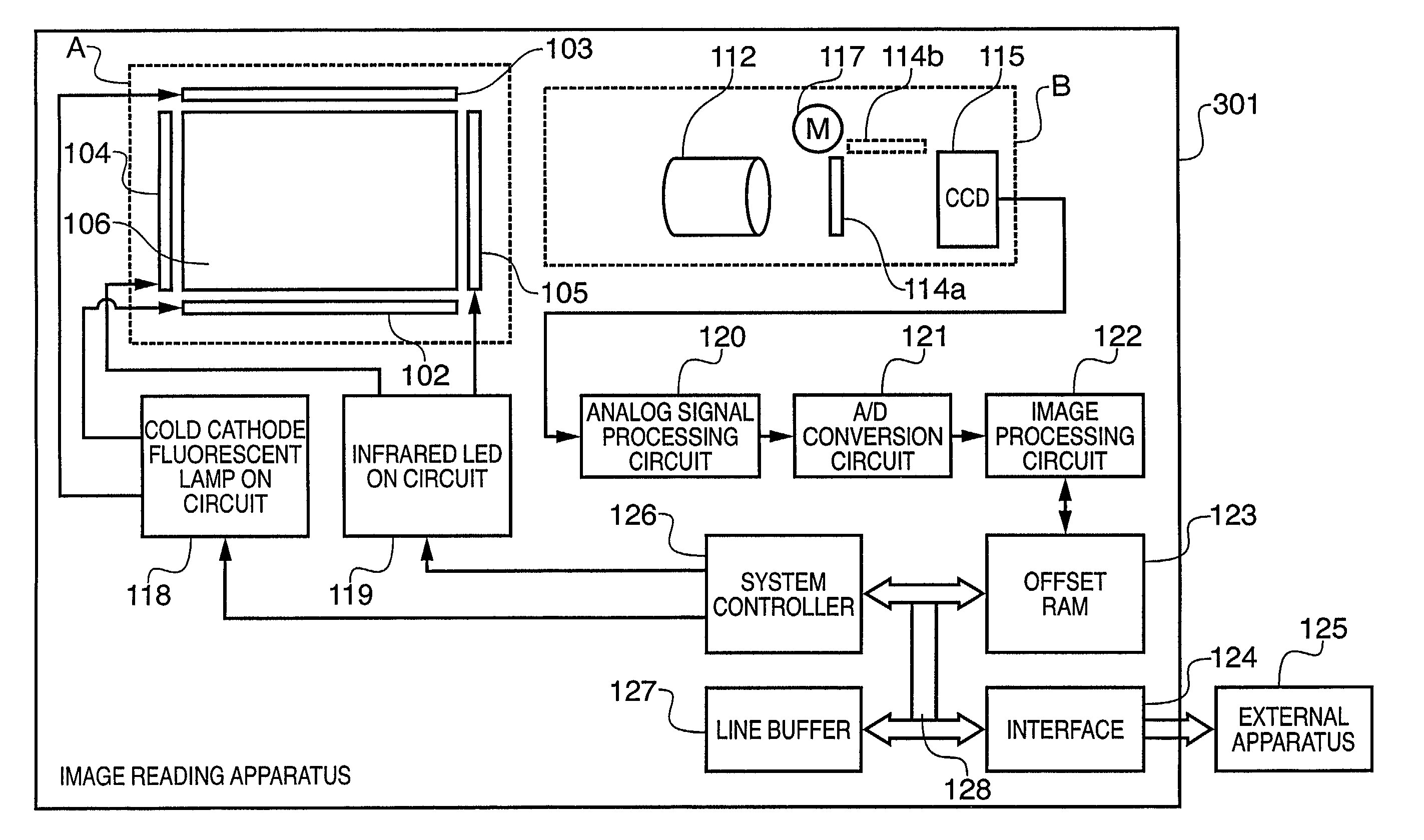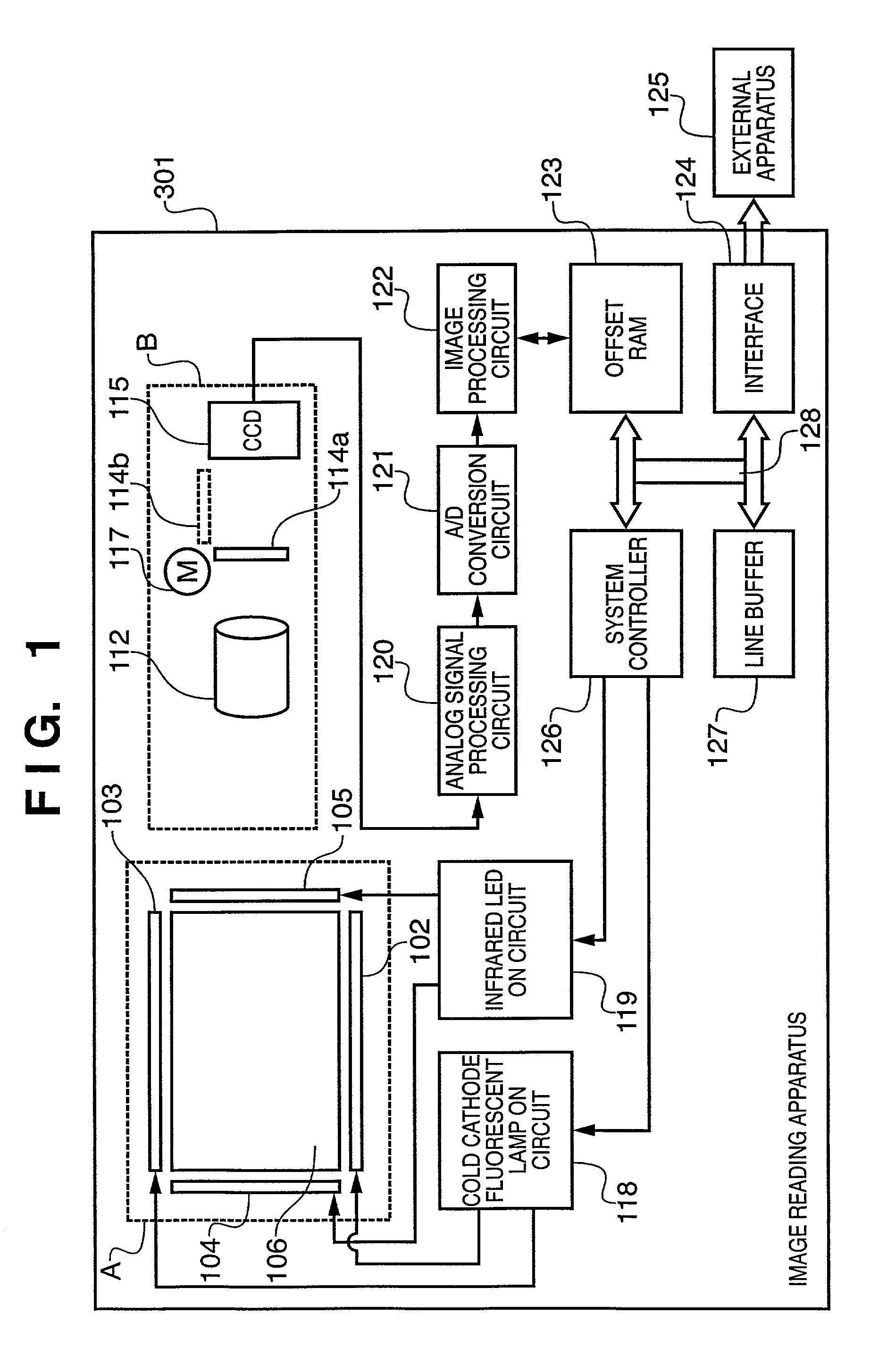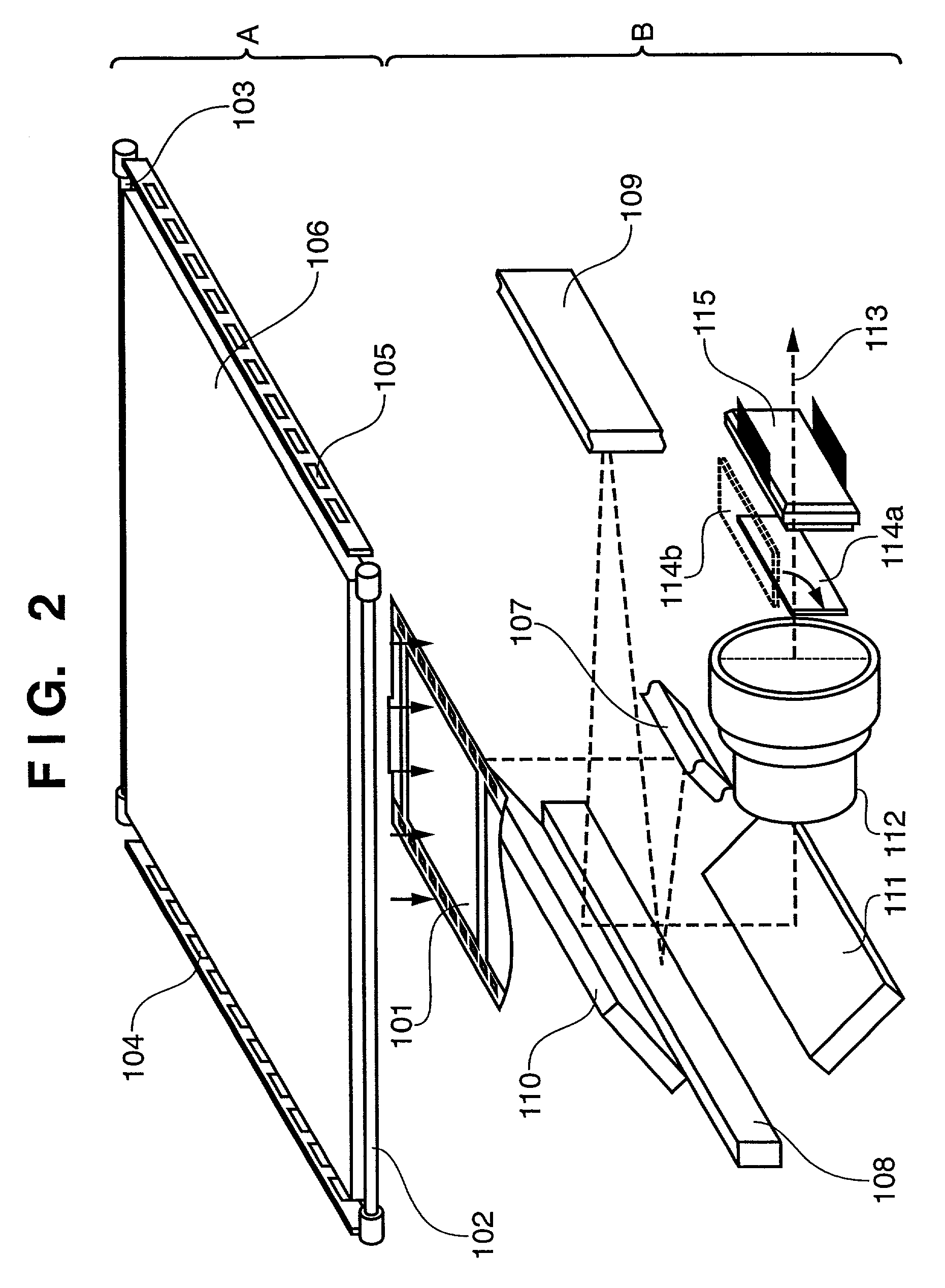Image processing for correcting defects of read image
a technology for reading images and image processing, applied in the field of image processing for correcting defects of read images, can solve the problems of inability to fully examine the on/off sequence of visible light sources and invisible light sources such as infrared sources, and the rise sequence has not been optimized, so as to achieve high-precision dust/scratch reduction functions, stable, and accurate dust/scratch detection.
- Summary
- Abstract
- Description
- Claims
- Application Information
AI Technical Summary
Benefits of technology
Problems solved by technology
Method used
Image
Examples
first embodiment
[0081]FIG. 3 is a block diagram showing the functional arrangement of a dust / scratch reducer 303 for performing dust / scratch reduction for an image signal output from the image reading apparatus 301 of the first embodiment in the personal computer 125. The dust / scratch reducer 303 in FIG. 3 may be incorporated in the image reading apparatus 301.
[0082]In FIG. 3, reference numeral 321 denotes an interface (I / F) for inputting image data obtained by reading a document by the image reading apparatus 301; 322, a visible light image memory for storing a visible light image obtained by reading a document by using the cold cathode fluorescent lamps 102 and 103; 323, an infrared image memory for storing an infrared image obtained by reading a document by using the infrared LED arrays 104 and 105; 325, a dust / scratch detection unit; 326, a dust / scratch reduction unit; 331, a magnification correction unit; 332, a positional shift correction unit; and 333, a reflection correction unit.
[0083]An o...
second embodiment
[0103]Transparent document reading operation including dust / scratch reduction in the second embodiment will be explained in detail with reference to the flow chart of FIG. 7.
[0104]In step S201, the reflecting document illumination lamp 145 and infrared lamp 151 in FIG. 26 are turned off, and the transparent document illumination lamp 144 is turned on. An illumination light beam from the transparent document illumination lamp 144 is uniformly diffused by a diffusion plate 143. The diffused light beam passes through a transparent document 142. The transmitted light beam is reflected by a mirror 147 and inverted-V mirrors 148, passes through an imaging lens 149, and is projected onto a CCD 150. The image projected onto the CCD 150 is converted into an electrical signal, which is temporarily stored in the image memory 22 via the I / F 21 in FIG. 6. If the transparent document is a negative film, a reversal process is performed to obtain a positive image (to be referred to as a “normal ima...
third embodiment
[0130]The third embodiment will be described with reference to FIGS. 13A to 13E, 14, and 15A to 15D. FIG. 13A shows a state in which dust 502 is on a film 501. FIG. 13B shows the gray level when the portion of FIG. 13A is read at a designated resolution by turning on a transparent document illumination lamp 144 shown in FIG. 26. Dust does not transmit any light, so the gray level distribution has a concave-up shape. FIG. 13C shows the gray level when the portion of FIG. 13A is read by turning on an infrared lamp 151 shown in FIG. 26, and particularly when this portion is read at a resolution much lower than a designated resolution. In this case, the portion of FIG. 13A is read at a very low resolution, and the gray level changes gradually. A gray level L2 having a difference by a value (or value set by a histogram and gray level analysis) set in advance as a predetermined level ΔL12 from a gray level L1 free from the dust / scratch influence in the infrared image view of FIG. 13C is s...
PUM
| Property | Measurement | Unit |
|---|---|---|
| peak wavelength | aaaaa | aaaaa |
| infrared wavelength | aaaaa | aaaaa |
| infrared wavelength | aaaaa | aaaaa |
Abstract
Description
Claims
Application Information
 Login to View More
Login to View More - R&D
- Intellectual Property
- Life Sciences
- Materials
- Tech Scout
- Unparalleled Data Quality
- Higher Quality Content
- 60% Fewer Hallucinations
Browse by: Latest US Patents, China's latest patents, Technical Efficacy Thesaurus, Application Domain, Technology Topic, Popular Technical Reports.
© 2025 PatSnap. All rights reserved.Legal|Privacy policy|Modern Slavery Act Transparency Statement|Sitemap|About US| Contact US: help@patsnap.com



